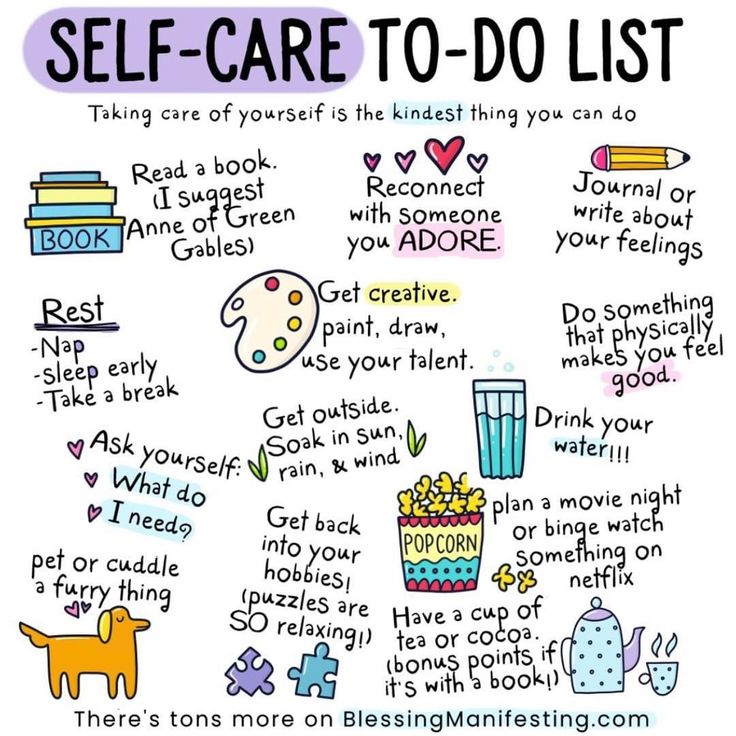Boundaries self care
How to Set Healthy Boundaries & Build Positive Relationships
Healthy boundaries define what is appropriate behavior in our relationships – behavior that keeps both parties safe.
And setting healthy boundaries is crucial for self-care and positive relationships.
But let’s first understand what boundaries are.
Boundaries differ from person to person and are mediated by variations in culture, personality, and social context. Boundaries appropriate in a business meeting would seem irrelevant in a nightclub with old friends! Setting boundaries defines our expectations of ourselves and others in different kinds of relationships.
Below, we will examine definitions of relationship boundaries, how to set healthy boundaries, the different types of boundaries, and how to establish healthy boundaries in different contexts. We review the New York Times bestseller “ Set Boundaries, Find Peace”.
In addition, we offer these free Positive Relationships PDF worksheets to help your clients define and set healthy boundaries—essential for healthy relationships.
This Article Contains:
- What Are Boundaries?
- How to Set Healthy Boundaries
- Examples of Healthy Boundaries
- Personal and Emotional Boundaries
- Boundaries in Psychology
- Set Boundaries, Find Peace: A Review
- 7 Healthy Boundaries Worksheets (PDFs)
- Positive Relationship Resources
- A Take-Home Message
- References
What Are Boundaries?
Let’s define boundaries. Put simply:
“A boundary is a limit or edge that defines you as separate from others”
(Katherine, 2010, p. 14).
Our skin is an obvious physical boundary, but we have other kinds of interpersonal boundaries too, including a limit that extends beyond our body.
Consider what happens when somebody stands too close for comfort. We often describe it as someone invading our personal space, but definitions of personal space vary according to culture, the type of relationship involved, and social context.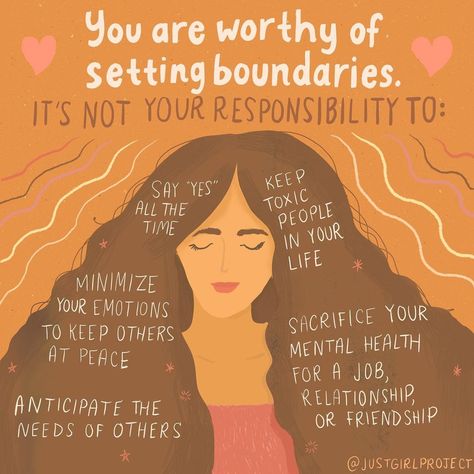
Comfortable boundaries with your partner at home, would not be appropriate in a different social context, such as attending a business dinner together.
Similarly, the level of physical intimacy deemed appropriate for expression in public spaces varies wildly across cultures.
When I lived in Sri Lanka, it was customary for children to greet their parents by touching their feet rather than hugging them. Meanwhile, touching, hugging, and kissing between married couples was frowned upon in public.
However, in the UK, hugging and kissing in public is acceptable, and embraces between friends, partners, and family members are deemed appropriate in shared public spaces.
Having said that, we all have friends or family members who are personally uncomfortable with hugging in any situation other than in private with their partner. Each individual is different.
So, in summary, a relationship boundary is an interpersonal limit that is mediated by variations in personality, culture, and social context.
How to Set Healthy Boundaries
Setting healthy boundaries requires self-awareness. We need to be clear about our expectations of ourselves and others, and what we are and are not comfortable with in specific situations. Setting healthy boundaries requires good communication skills that convey assertiveness and clarity.
Assertiveness involves expressing your feelings openly and respectfully. It does not entail making demands, but it requires people to listen to you. Setting healthy boundaries requires you to assert your needs and priorities as a form of self-care. Tawwab outlines three easy steps to setting healthy boundaries:
Step 1. Be as clear and as straightforward as possible. Do not raise your voice.
Step 2. State your need or request directly in terms of what you’d like, rather than what you don’t want or like.
Step 3. Accept any discomfort that arises as a result, whether it’s guilt, shame, or remorse.
The third step is common for people with poor boundaries, codependency issues, or are people pleasers.
Sometimes, adults have been raised by childhood carers who’ve taught them that expressing their needs is bad and selfish. However, not accepting the discomfort that comes from setting healthy boundaries in adulthood means settling for unhealthy relationships that can cause resentment, manipulation, and abuse.
Examples of Healthy Boundaries
Examples of healthy boundaries include:
- Declining anything you don’t want to do
- Expressing your feelings responsibly
- Talking about your experiences honestly
- Replying in the moment
- Addressing problems directly with the person involved, rather than with a third party
- Making your expectations clear rather than assuming people will figure them out.
Setting healthy boundaries also requires an awareness of different boundaries involved in relationships, as illustrated in our ‘7 Types of Boundaries’ diagram below.
Personal and Emotional Boundaries
In this section, we will look at personal and emotional boundaries. In the diagram above, personal boundaries refer to all seven types of boundaries that affect our personal wellbeing.
In the diagram above, personal boundaries refer to all seven types of boundaries that affect our personal wellbeing.
When we maintain healthy boundaries in all seven domains we will thrive, but when others cross or violate our boundaries, there will be a personal cost if we do not address it.
One domain refers to emotional boundaries which determine how emotionally available you are to other people. We all need support at different times when life hits us with unexpected events, or just help to process the onslaught of micro stressors during the day, sometimes referred to as ‘daily hassles’ in the psychology literature (Falconier et al., 2015).
However, we can’t always be there for people as we often have other priorities to attend to, such as work, domestic, and family responsibilities. As adults, we must take care of ourselves first. Self-care is the foundation of health, while putting others’ needs before our own is a characteristic of codependency that can lead to burnout.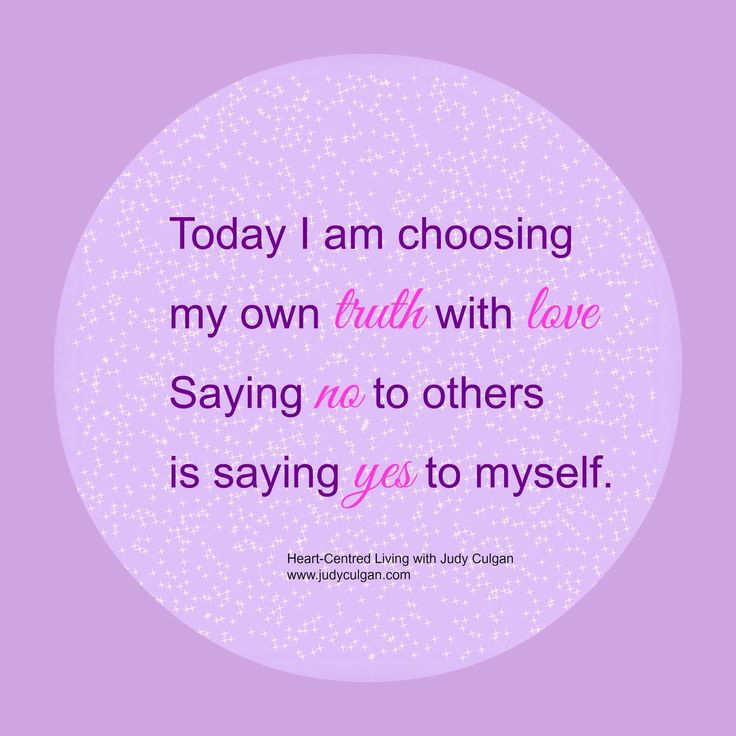
When we don’t maintain healthy emotional boundaries with others, we may feel resentful, guilty, and drained.
As in the 7 Types of Boundaries diagram above, it is perfectly OK to state your limitations to people who make demands of your emotional resources. If they push back against your boundaries or continue to violate them, then this shows your relationship may be off balance, problematic, or even toxic.
If so, then restate your boundary and withdraw calmly. There is no need to over-explain yourself or apologize for setting boundaries, as everyone may say what they do and do not want to do.
When we are dealing with people who repeatedly cross or violate our personal boundaries, then the whole nature of the relationship may need to change. This can be tricky when the relationship is with somebody we cannot escape, such as co-workers and family members.
The rest of the article focuses on how to set healthy boundaries in specific relationship contexts.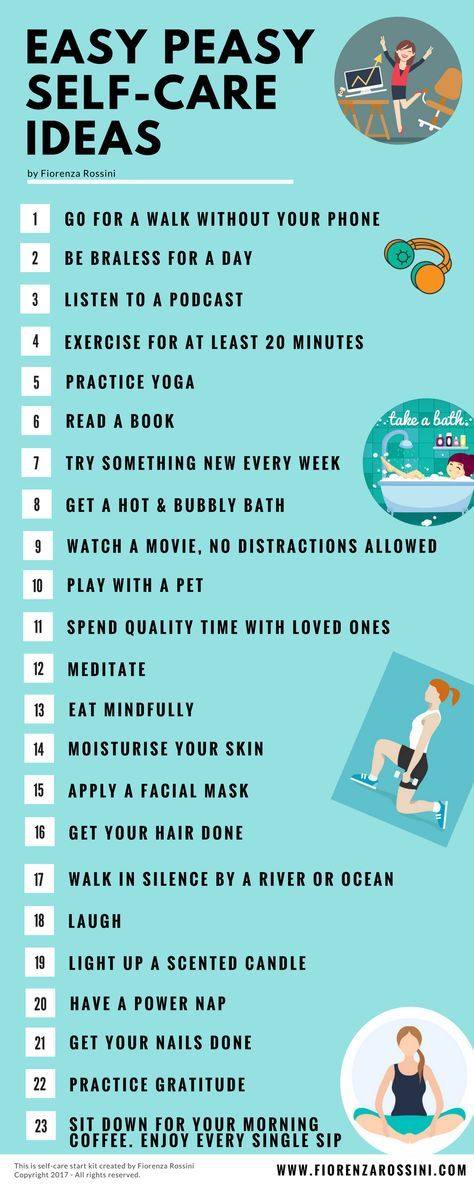
Boundaries in Psychology
Boundaries are essential for maintaining psychological wellbeing, especially when providing psychological services to clients as mental health professionals.
There is extensive literature on the harms caused by poor boundaries and boundary violations in clinical relationships with patients and clients (Aiyegbusi & Kelly, 2012; Aravind, Krishnaram & Thasneem, 2012; Davies, 2007).
The APA’s psychologists’ code of ethics does not make any explicit statements about professional boundaries, although it covers related areas including:
- multiple relationships (such as offering therapy to a student or friend),
- sexual intimacies with current therapy clients/patients;
- sexual intimacies with relatives or significant others of current therapy clients/patients;
- therapy with former sexual partners; and
- sexual intimacies with former therapy clients/patients (American Psychological Association, 2017).

Similarly, the BPS has no explicit statement on boundaries in their code of ethics for British psychologists and associated clinical professions, but outlines key principles including confidentiality and the related code of conduct (British Psychological Society, 2021).
Meanwhile, the British Association for Counselling and Psychotherapy (BACP) has a detailed position statement on boundaries which begins as follows:
“It is a therapist’s duty to keep their clients psychologically safe. Boundaries are agreed limits or rules which help provide this safety and protect both the client and the therapist. They set a formal structure, purpose and standards for the therapy and the therapeutic relationship” (British Association for Counselling and Psychotherapy, 2020, para. 3).
Health professionals of all kinds occupy a position of trust in their patients’ and clients’ lives. In legal terms, clinical and caring professionals have a fiduciary duty toward their clients as beneficiaries of their services that entails maintaining professional boundaries that protect the client’s interests above their own, at all times (Aravind, Krishnaram & Thasneem, 2012).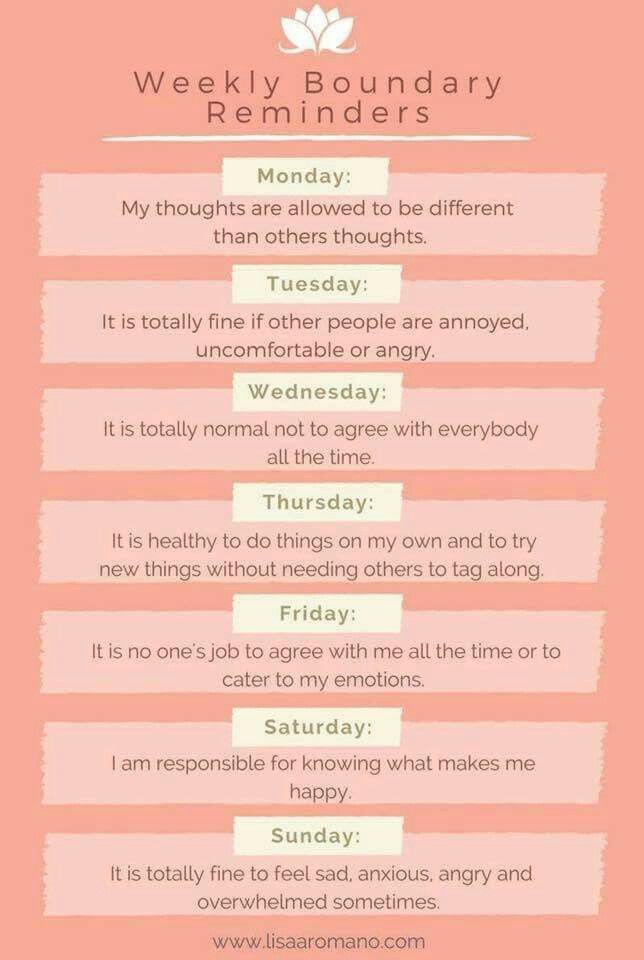
Setting boundaries at work
Maintaining healthy boundaries at work has become increasingly difficult with flexible working, remote and hybrid working, and technological progress.
Setting boundaries at work begins during the interview process, where you can establish what kinds of work practices you will accept, especially accessibility during working hours, out-of-hours working, and remote working arrangements.
Career Contessa offers eight tips for establishing healthy boundaries in the workplace.
- Assess your personal boundaries first. These will be determined by your values and priorities. If you are not clear about your boundaries, then it’s much easier for others to cross them or violate them, leading to discomfort, stress, and even resentment.
- Communicate directly. Be upfront yet professional. Avoid getting involved in discussing your colleagues with each other. Let people know when you are available and how you handle emails that arrive in your inbox outside work hours.

- Create clear structures for your work, especially times for focused work, by letting your colleagues know when you do not want to be disturbed.
- Keep your relationships professional. As tempting as it may be to become best friends with colleagues, it can lead to blurred boundaries and problems later on.
- Delegate work when appropriate to manage your workload.
- Get comfortable saying no.
- Take time off.
- Use technology to set and maintain work boundaries, by keeping others informed and using shareable project management tools, such as Trello or Asana.
Watch their video below for more detail.
If you find yourself in a workplace where your boundaries are repeatedly crossed or violated despite setting boundaries, then you may be being bullied or harassed.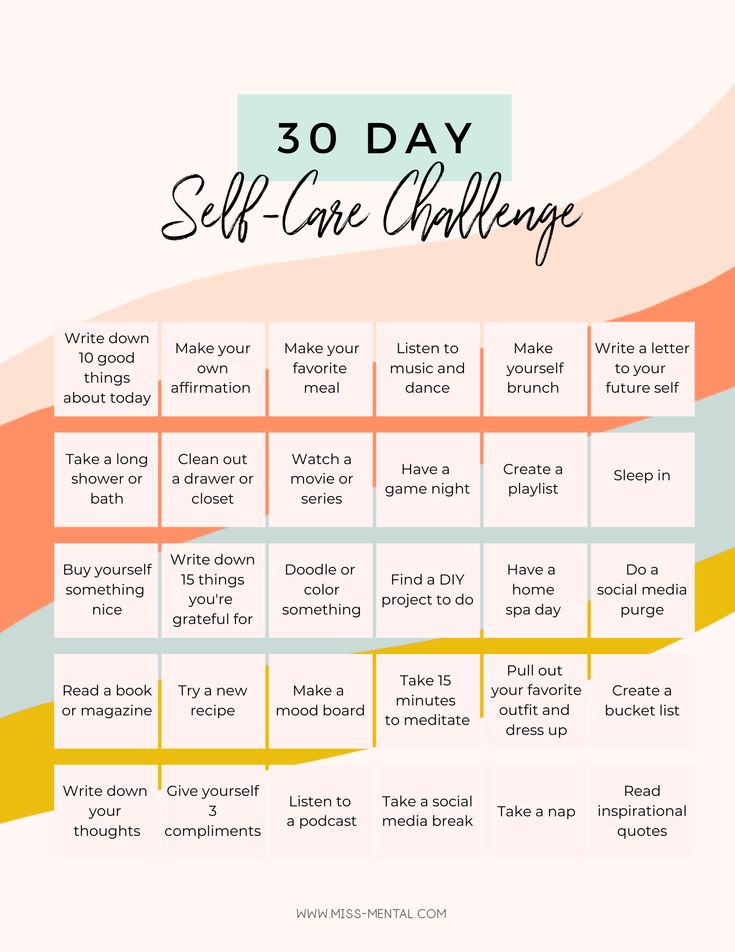 Look at this article on workplace bullying on how to manage and address the situation.
Look at this article on workplace bullying on how to manage and address the situation.
Healthy boundaries in friendships
The tips for keeping healthy boundaries in friendships include some points mentioned above, especially understanding your personal limits in terms of time and emotional investment.
These can also change as life events occur that entail a shift in priorities. For example, the time and energy you invest in friendships may change after starting a family. Your children become a priority and friendships may become less important until your children become more independent.
In the TED Talk below, Shasta Nelson describes the three requirements for healthy friendships that she calls ‘frientimacy’ as:
- Positivity
- Consistency
- Vulnerability
Setting boundaries and maintaining them with friends requires mutual trust and respect. Refer to our seven types of boundaries diagram above to consider your boundaries in friendships.
Boundary setting with friends who have crossed or violated them can be difficult, and you may experience pushback. If so, reassert the boundary again and be prepared to take a break from them by ignoring messages and calls for a while if the pushback continues.
Dr. Nicole LePera is a clinical psychologist trained at Cornell University in the US who has her own YouTube channel called the Holistic Psychologist. In the video below, she outlines the three key boundaries she has identified as essential for healthy friendships:
- Conversational
- Consumption
- Energetic
Boundaries in relationships
This section will take a brief look at boundaries in intimate relationships between partners. Many of the tips offered above also apply to intimate partnerships, including marriage. Let’s just take a moment to consider this quote:
“Boundaries are the gateway to healthy relationships.”
(Tawwab, 2021, p. 3)
Romantic relationships often run into trouble when implicit assumptions are made about shared values and relationship goals.
The key to having healthy intimate partnerships is clear communication between partners about mutual needs and expectations. Our worksheets below will provide further guidance.
This video by FlexTalk discusses how to set and maintain healthy boundaries in marriage, which also applies to any committed intimate partnership.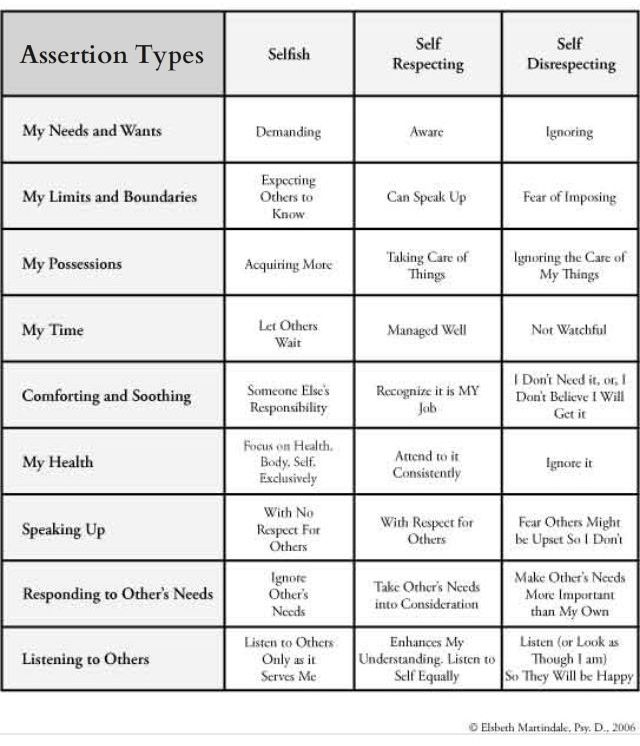
Set Boundaries, Find Peace: A Review
‘Setting limits won’t disrupt a healthy relationship’ says the author of this book, Nedra Glover Tawwab, a psychotherapist. (Tawwab, 2021, p. 130).
If you struggle with setting boundaries, then this book is for you. It prioritizes the self-care we need to look after ourselves and others.
The author uses real-life case histories from her therapeutic practice to illustrate a range of problems caused by poor boundaries.
In each chapter, she offers exercises to help readers identify communication skills deficits that lead to poor boundaries and provides helpful tips on how to set and maintain boundaries.
By setting boundaries in relationships, we also discover which relationships are healthy and which are not.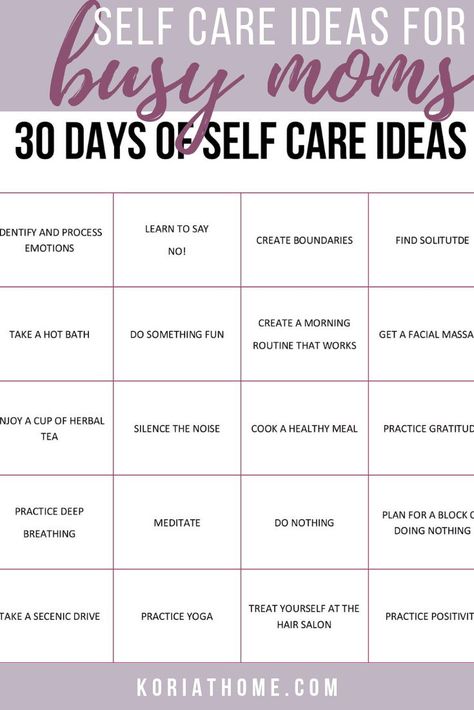 As Tawwab explains, if friends, family members, or work colleagues push back against our boundaries by ignoring them, challenging them, or cutting us off, then the relationship was already in deep trouble and needed to end.
As Tawwab explains, if friends, family members, or work colleagues push back against our boundaries by ignoring them, challenging them, or cutting us off, then the relationship was already in deep trouble and needed to end.
However, boundaries are not walls. Tawwab says that behavior that erects walls, such as cutting people off without giving them a right to reply, (sometimes called ghosting) or prolonged silent treatment, is not about setting healthy boundaries, it is emotionally abusive.
Part two is a guide on how to set boundaries in all kinds of relationships, including family, romantic relationships, friendships, at work, and with social media and technology use. This is all followed up by a self-assessment quiz to help you check your progress.
Find the book on Amazon.
7 Healthy Boundaries Worksheets (PDFs)
To assist your clients in determining their boundaries, and then be comfortable in asserting them, make use of this selection of helpful resources.
1. Visualizing Your Boundaries
The worksheet Visualizing Your Boundaries helps your client identify life areas needing firmer boundaries.
2. The Personal Boundary Continuum – A Self-Reflection Tool
The Personal Boundary Continuum exercise helps your client define their boundaries in different life domains, and understand which areas of life may need more flexibility or firmer boundaries.
3. How to Set Boundaries – Saying No
This Saying No worksheet offers tips on how to set boundaries using the word ‘no’.
4. How to Set Boundaries – Stating What You Want
This State What You Want worksheet offers tips on how to set boundaries by stating what you want.
5. Group Boundary Setting Exercise
This Group Boundary Setting worksheet describes a group exercise that uses body language and speech to set and maintain boundaries.
6. Dealing With Boundary Violations
Dealing With Boundary Violations presents eight steps for dealing with boundary violations, especially when we are setting new boundaries in difficult situations.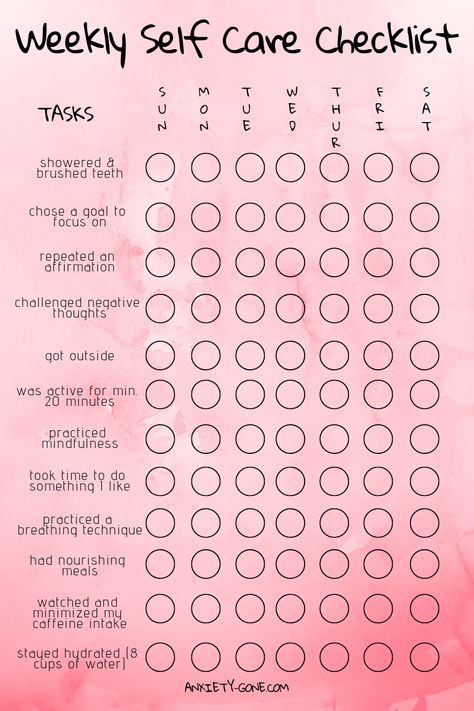
7. Setting Internal Boundaries
The Setting Internal Boundaries worksheet helps you set internal boundaries by committing to the behavior you want to embrace (e.g., taking regular exercise, keeping a journal) and avoiding behavior that leaves you feeling uncomfortable (e.g., getting drunk with friends, yelling at your partner).
Positive Relationship Resources
PositivePsychology.com has several other relationship articles with resources you may find useful. Click on the links below for more.
- Building Healthy Relationships: Helpful Worksheets
- The Importance of Positive Relationships in the Workplace
- Conflict Resolution in Relationships & Couples: 5 Strategies
- Conflict Resolution Strategies for the Workplace
- Emotional Intelligence in Relationships (+Activities for Couples)
A Take-Home Message
Setting healthy boundaries is an essential life skill and an important self-care practice. Healthy boundaries create healthy relationships.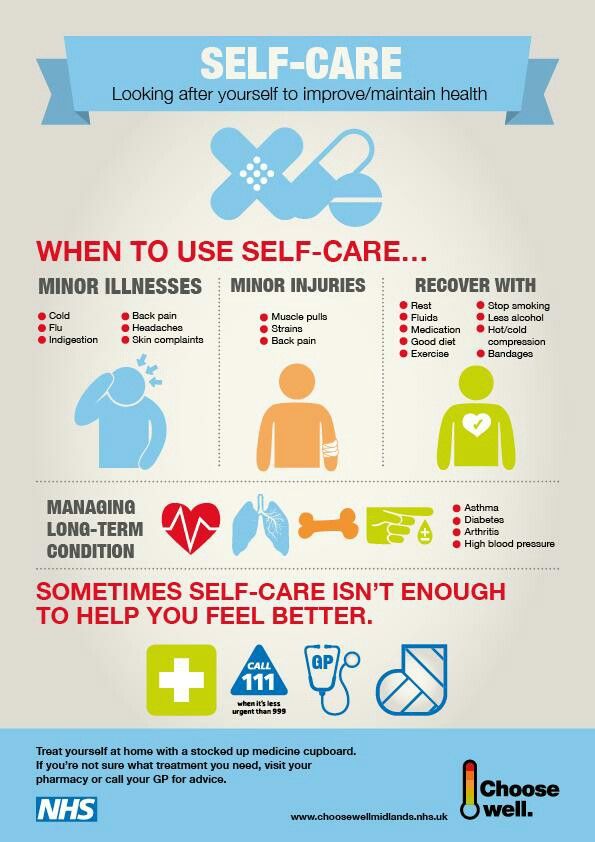
While someone who’s not used to setting boundaries might feel guilty or selfish when they first start, setting boundaries is necessary for mental health and wellbeing.
Appropriate boundaries can look very different depending on the setting, but it’s important to set them in all areas of life where we interact with others.
Finally, while setting boundaries is crucial, it is just as important to respect others’ boundaries, including parents, children, romantic partners, managers, coworkers, and anyone else we interact with.
We hope you enjoyed reading this article. Don’t forget to download our three Positive Relationships Exercises for free.
- Aiyegbusi, A. & Kelly, G. (2012). Professional and therapeutic boundaries in forensic mental health practice. Jessica Kingsley Publishers.
- American Psychological Association. (2017). Ethical principles of psychologists and code of conduct (2002, amended effective June 1, 2010, and January 1, 2017).
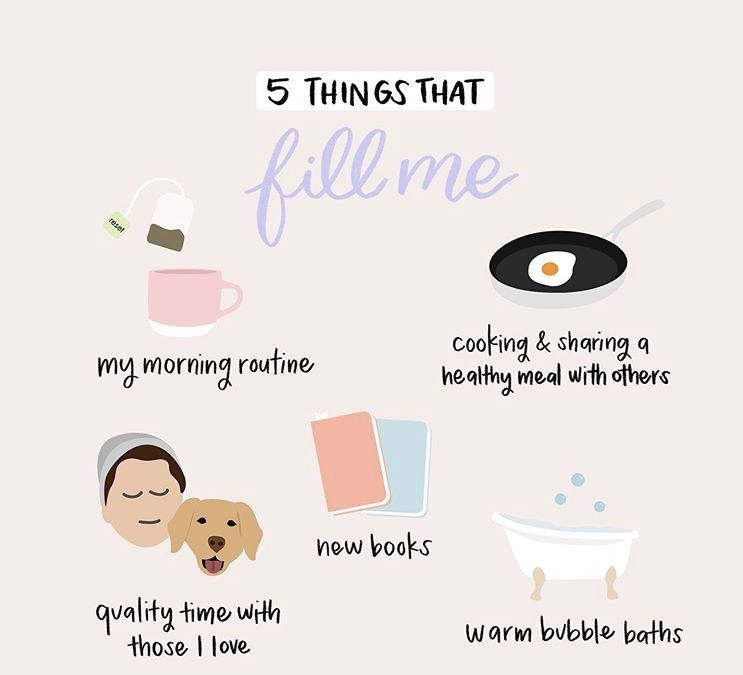 Retrieved on 28 Oct 2022 from http://www.apa.org/ethics/code/index.html
Retrieved on 28 Oct 2022 from http://www.apa.org/ethics/code/index.html - Aravind, V. K., Krishnaram, V. D., & Thasneem, Z. (2012). Boundary crossings and violations in clinical settings. Indian Journal of Psychological Medicine, 34(1):21-4.
- British Association for Counselling and Psychotherapy. (2020). What do counsellors and psychotherapists mean by boundaries – Client information sheet. Retrieved on 28 Oct 2022 from https://www.bacp.co.uk/media/8273/bacp-boundaries-client-information-sheet-april-2020.pdf
- British Psychological Society. (2021). BPS Code of Ethics and Conduct. Retrieved on 28 Oct 2022, from https://cms.bps.org.uk/sites/default/files/2022-06/BPS%20Code%20of%20Ethics%20and%20Conduct.pdf
- Davies, M. (2007). Boundaries in counselling and psychotherapy. Athena Press.
- Falconier, M. K., Nussbeck, F., Bodenmann, G., Schneider, H., & Bradbury, T. (2015). Stress from daily hassles in couples: Its effects on intradyadic stress, relationship satisfaction, and physical and psychological well-being.
 Journal of Marital and Family Therapy, 41, 221– 235.
Journal of Marital and Family Therapy, 41, 221– 235. - Katherine, A. (2010). Boundaries: Where you end and I begin. Hazelden Publishing.
- Tawwab, N. G. (2021). Set boundaries, find peace: A guide to reclaiming yourself. Little, Brown Book Group.
Boundaries and Self-Care | Hazelden Betty Ford Foundation
Boundaries are not just about what behaviors we accept, they are also about how much we are open or closed to others.
"Setting boundaries is a way of caring for myself. It doesn't make me mean, selfish, or uncaring because I don't do things your way. I care about me too." —Christine Morgan
Simply caring for ourselves is challenging enough in today's world, but self-care in the context of relationships adds many layers of complexity. I have good news for you. There's a special skill that will help you navigate that complexity. It will build your own self-respect and others' respect for you. It will give you guideposts in your relationships and help prevent resentment and craziness. This blog is all about boundaries: setting them, protecting them, and respecting others' boundaries, too.
This blog is all about boundaries: setting them, protecting them, and respecting others' boundaries, too.
Self-care means taking personal responsibility. Here's our chance to rise to a challenge—one that we (and only we) can do something about. So let's flex our boundary-setting muscles and get started.
The Art of Boundaries
The concept of boundaries is a biggie. Drawing on a sports metaphor, we speak of setting and observing boundaries in relationships. Behavior that we deem acceptable, is "within bounds" in our relationships, and what we consider unacceptable and totally out of bounds. We need to know what we will tolerate and what we won't with our friends, family and romantic partners, physically, psychologically, and mentally. Boundaries allow us to differentiate ourselves from each other. They communicate identity—I am me, and my needs, desires and expectations differ from yours, and I am willing to voice them."
Our boundaries might be rigid, loose, somewhere in between, or even non-existent.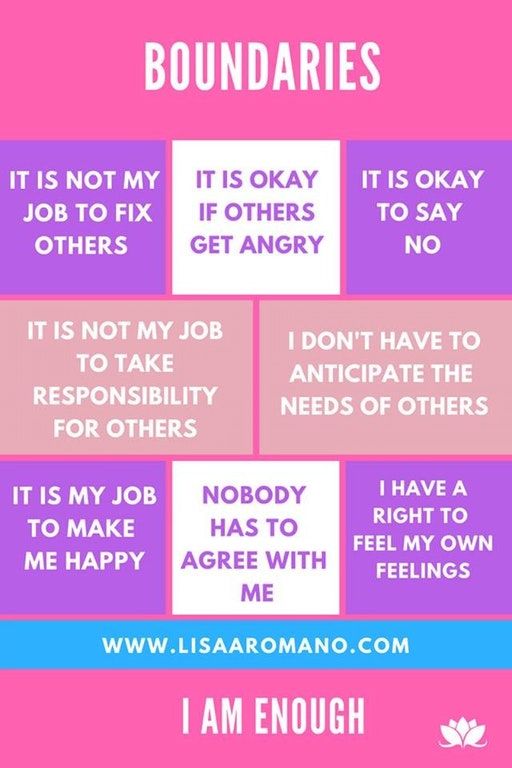 A complete lack of boundaries may indicate that we don't have a strong identity or are enmeshed with someone else. That narrative goes like this: "It doesn't matter what I want, I only what you want."
A complete lack of boundaries may indicate that we don't have a strong identity or are enmeshed with someone else. That narrative goes like this: "It doesn't matter what I want, I only what you want."
Boundaries are not just about what behaviors we accept, they are also about how much we are open or closed to others. If we grew up in a family where there were no boundaries—no private space, no ability to say no, no doors shut, nothing respected as private property, or worst of all, physical and sexual abuse—we may have developed overly strict or rigid boundaries to protect ourselves. But if we're so closed off that we're like a locked vault, then we're too guarded and defensive to make connections with people. If, on the other hand, we're a totally open book with no secrets, limits, or personal space, then we'll feel depleted, drained, and lacking in a solid sense of self. Rigid boundaries are definitely appropriate in certain categories: abuse, for example, is never okay, ever.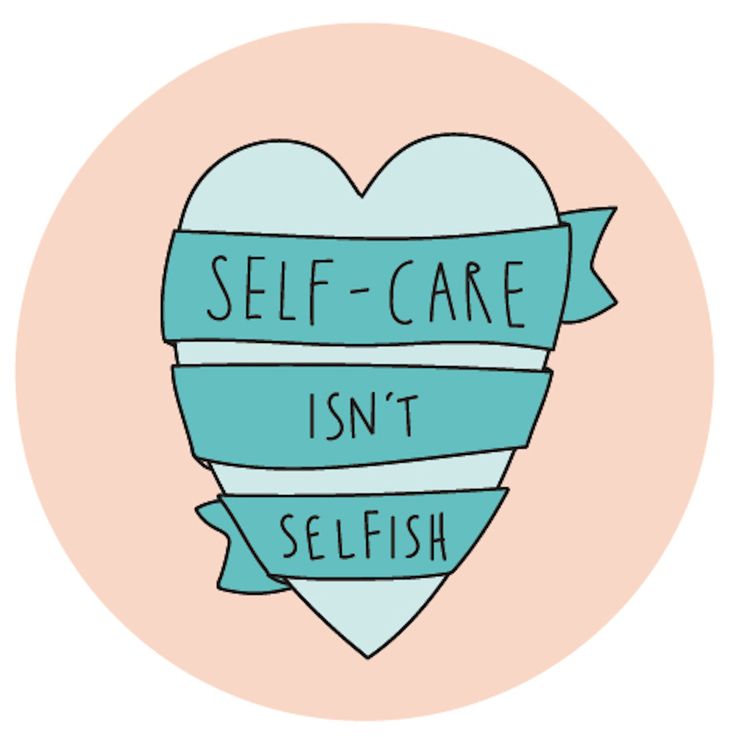 In other categories, however, some flexibility around boundaries is necessary and totally healthy. In short, super-firm boundaries can be as unhealthy as loosey-goosey boundaries. Again, it depends on context. Principle 5: Self-care requires attention and responsiveness.
In other categories, however, some flexibility around boundaries is necessary and totally healthy. In short, super-firm boundaries can be as unhealthy as loosey-goosey boundaries. Again, it depends on context. Principle 5: Self-care requires attention and responsiveness.
What might it sound like to declare a boundary? Here are some examples of clear, practical boundaries that could help keep relationships in good working order:
- I need my kids to tell me when they're going to be home late.
- I feel disrespected when you don't listen or you interrupt me when I'm speaking.
- I expect you to pay back the money you borrowed.
- It is not okay with me for my roommates to go in my room without my permission.
- I expect my friends to not repeat personal information that I share with them.
- Don't call me at work unless it is an emergency.
- I am not okay with you commenting on my body, weight, or appearance.
- I get to decide what kind of touch, sexuality, and contact I have with others.
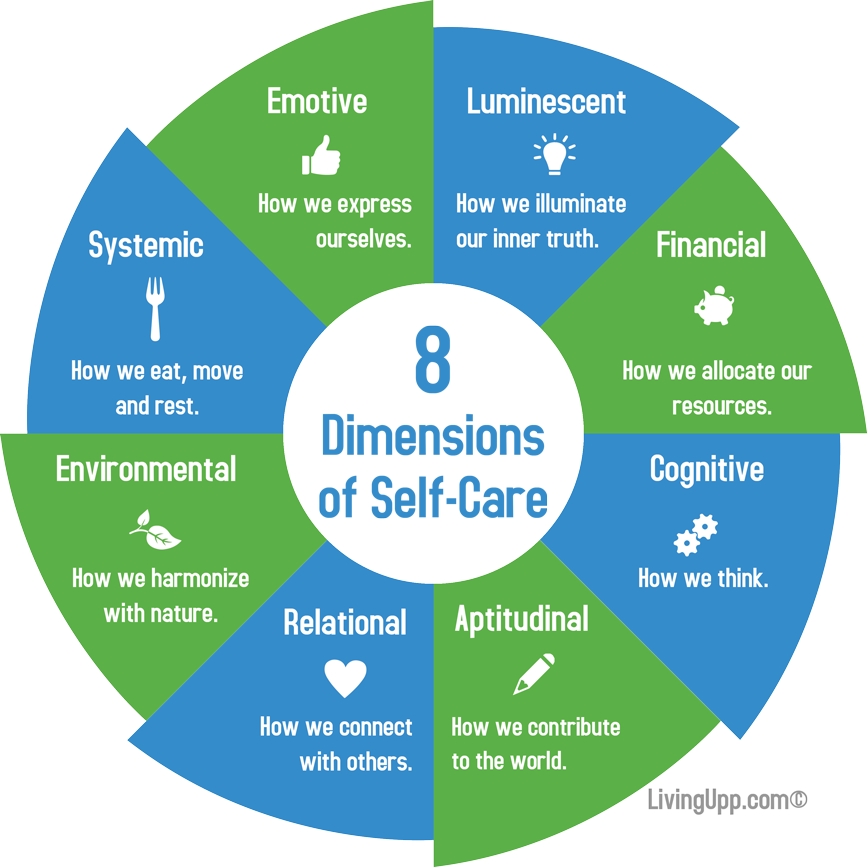
- I know that I said I could do that favor for you, but I am not able to.
Why setting boundaries is so hard
You might believe that love is never having to set boundaries, but that's wrong. You might believe that love requires us to deny our own needs, but that is also wrong. You might have learned that endless giving is what being a mother, wife, friend is all about, and you may feel guilty at the mere notion of setting a boundary. Self-care challenges that idea. Self-care says that we have an absolute requirement to not let ourselves be stepped on.
You might feel it's not worth the risk, because of the anger or conflict that could arise from setting a boundary. But in my practice and personal experience, this is absolutely not true. As Dr. Henry Cloud and Dr. John Townsend wrote in Boundaries, "The person who is angry at you for setting boundaries is the one with the problem... Maintaining your boundaries is good for other people; it will help them learn what their families of origin did not teach them: to respect other people.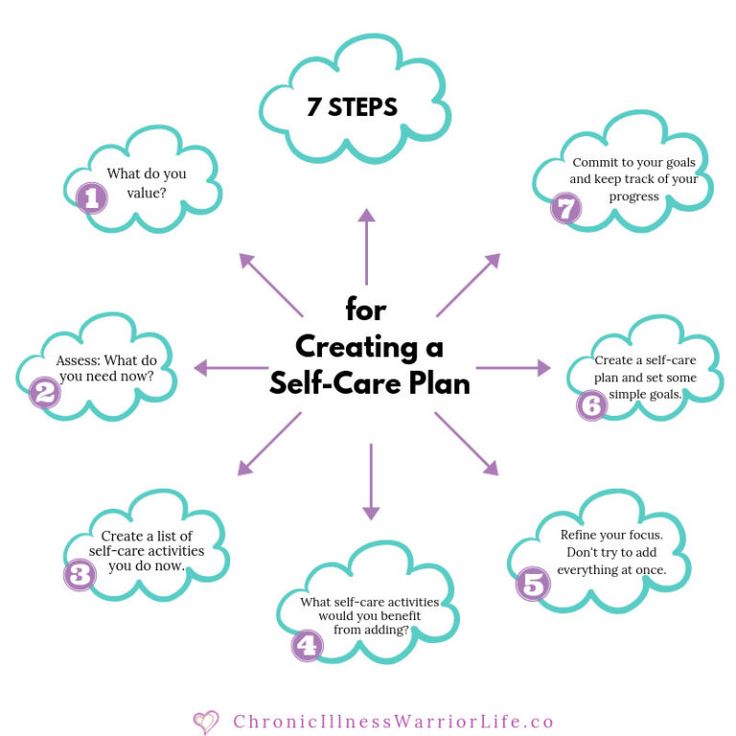 "
"
Reflecting on my own life, I am super good about my boundaries in some areas. Give me a gold star in my work life. I take Sundays off, I won't take calls after 9 p.m., I keep sessions to 50 minutes, and I charge for sessions not canceled 24 hours in advance. In my personal life, too, there are some boundaries that I am firm and absolute about. I will only be in relationships with people who are supportive, honest, and respectful. I absolutely will not tolerate physical abuse. My friends are respectful of my boundaries about when I am available to chat and know that my Sundays are spent with my significant others.
But that being said, boundaries have been a challenge for me throughout my life. I often have an automatic reaction to avoid conflict. As a result, I will sometimes know exactly what my boundary is but not dare to verbalize it. And yet, if someone "ignores" that unexpressed boundary—totally blamelessly—I feel screamingly violated, yet I don't object; nobody but me knows about it because I'd never set the boundary out loud.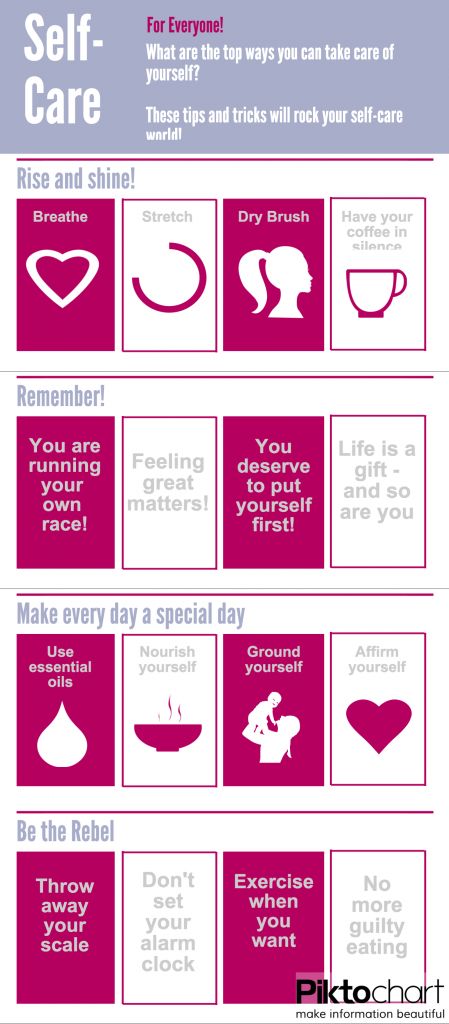 I experience the anger and resentment of a boundary violation, but I never set it to begin with. The problem, in this case, is mine.
I experience the anger and resentment of a boundary violation, but I never set it to begin with. The problem, in this case, is mine.
Or perhaps I've set a boundary, but it's been crossed. When someone metaphorically tracks their dirty boots over my "No you don't" zone, I feel shocked. I know I am not okay with what has just happened, but I fear that confronting the person will lead to a fight. And I believe that I don't know how to fight without getting hurt. I feel creepy and awful that a boundary has been crossed and even worse that—unlike the umpires at Wimbledon, who so loudly call "out!" —I didn't confront it. I have a bad feeling in my stomach. That somatic sensation says to me I am going to be in big trouble if I say, "No! Not okay! Out of bounds!" so I stuff the feeling and suffer in silence.
In reflecting on my own boundaries and why I don't set them and stick to them, it comes down to a sense of lack of entitlement. As soon as something goes into my out-of-bounds zone—even a clearly declared one—my nervous system tells me that there is little to nothing that I can do about it. I don't feel entitled to defend that boundary. I fear that the other person will be angry, maybe irrationally so. I feel hopeless; I take no action.
I don't feel entitled to defend that boundary. I fear that the other person will be angry, maybe irrationally so. I feel hopeless; I take no action.
I am not alone in this syndrome. I hear about boundary guilt a lot in my work, especially from women. The myths that that most often stop us from setting or protecting our boundaries are these:
- I am wrong to need boundaries.
- If I set boundaries, they won't be respected.
- If I set boundaries, I will lose love.
- Love doesn't need boundaries.
How fear stops people from setting boundaries
I know people who are afraid of antiques, moths, hair products, salad bars, and even egg yolks. All of those, I suppose, have their own logic. But a fear of anger seems, to my mind, wise—wiser even than a fear of public speaking or heights. And those of us with a history of trauma have to work especially hard to overcome fear of anger. Setting boundaries can be a trigger for those who grew up in homes where they weren't allowed, or were chaotic and ever-changing.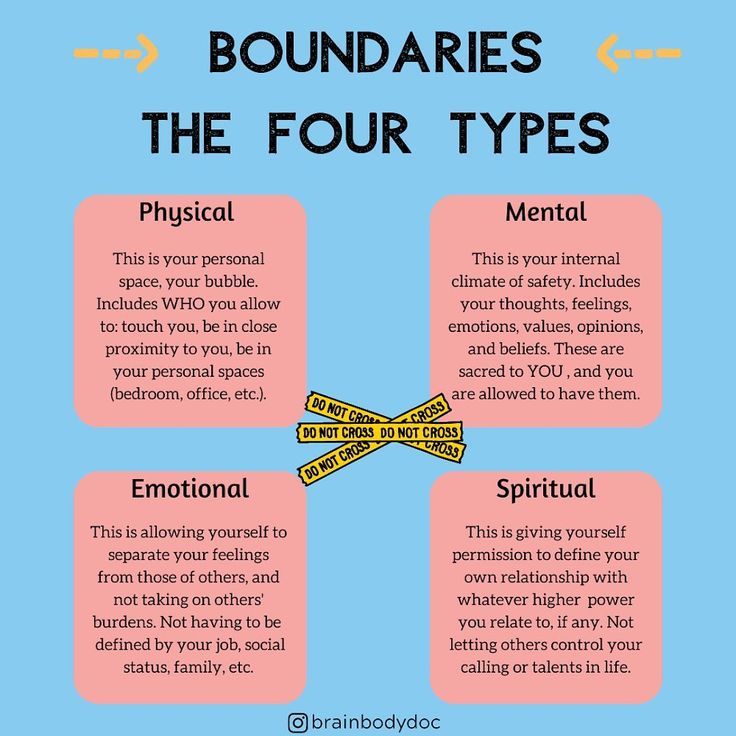 So we might not set boundaries as a way to avoid an expectation from the past. The thinking goes like this—"If I set boundaries, dad got mad at me, and so I believe all people will get mad at me." That, my friend, is a cognitive distortion—an expectation that what happened in the past is going to happen again. The difference between then and now is that you aren't a kid, and if someone doesn't respect your boundaries you get to do very adult things like say, "Get lost." You can leave, enlist help, call the cops if needed. If someone doesn't respect you and your boundaries you can choose self-respect, self-care, and move on.
So we might not set boundaries as a way to avoid an expectation from the past. The thinking goes like this—"If I set boundaries, dad got mad at me, and so I believe all people will get mad at me." That, my friend, is a cognitive distortion—an expectation that what happened in the past is going to happen again. The difference between then and now is that you aren't a kid, and if someone doesn't respect your boundaries you get to do very adult things like say, "Get lost." You can leave, enlist help, call the cops if needed. If someone doesn't respect you and your boundaries you can choose self-respect, self-care, and move on.
I shared with my wise boundary-setting guru of a friend, Pammy, that I had some boundaries I needed to set, but I also told her that I wasn't able to set them, that I was afraid of how the persons in question would respond. They would surely attack me, yell, scream, and tell me I am stupid and ugly. Irrational? Yes. Does that irrational fear stop me and silence me? Absolutely.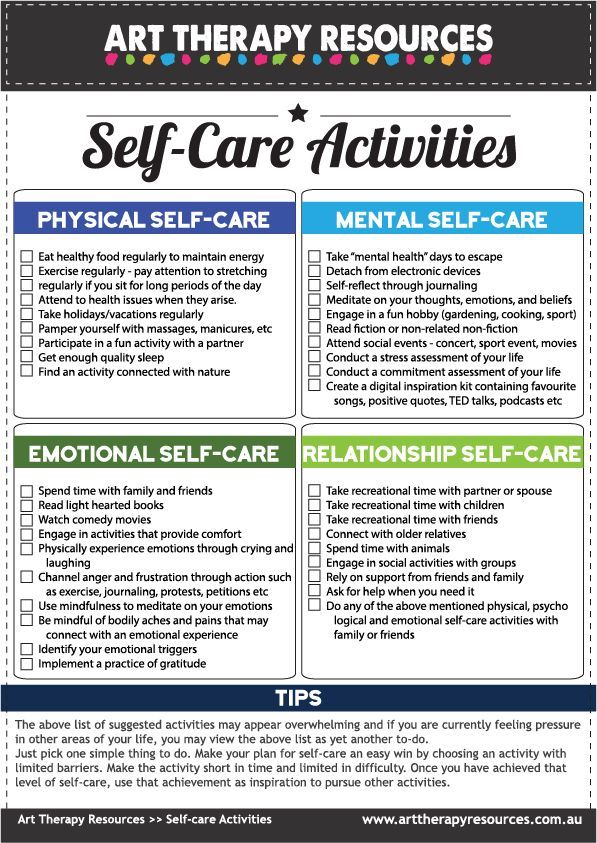
Upon hearing my irrational inner dialogue, Pammy said, "I have an assignment for you. I want you to report to me any and all instances when you set a boundary and the other person gets angry at you. But in the moment when it happens, I want you to become aware of your anger that comes up and let it out, not in a crazy rage-filled way—but in a way that gives voice to that anger. If your boundaries aren't being respected then say with your body, your energy, or your words to someone to back off. I want you to report back to me."
I nervously agreed, and just a week later I had an opportunity to practice. I was meeting with a woman who became completely disrespectful and confrontational. I knew for sure that I was not okay with how she was treating me. I self-talked my way through it and said, This person already sees me as difficult and problematic, so what have I got to lose? There's no reason not to stand up for myself. Now, for the record, let me tell you, I was scared.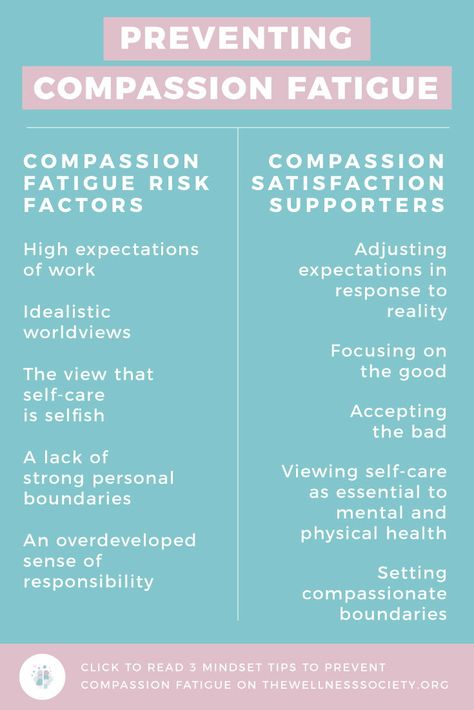 My legs were shaking. I was uncomfortable. I was sure I was going to get in "big trouble" (when that phrase occurs to me, it's code that I've time traveled back to being a little girl). I wanted to suppress my anger, but I remembered the assignment that Pam gave me. So I did it. I confronted the woman who was tap dancing over my boundaries. I got clear, adopted a strong voice, and said, "You are being disrespectful. I am not okay with this."
My legs were shaking. I was uncomfortable. I was sure I was going to get in "big trouble" (when that phrase occurs to me, it's code that I've time traveled back to being a little girl). I wanted to suppress my anger, but I remembered the assignment that Pam gave me. So I did it. I confronted the woman who was tap dancing over my boundaries. I got clear, adopted a strong voice, and said, "You are being disrespectful. I am not okay with this."
Amazingly, the woman backed down, although I still felt a bit of that shaky "big trouble" feeling, worried that she might see me as "not nice." But mostly I felt relieved that the boundary had been set and that there was some new hope of resolution and change. I self-soothed and told myself this would pass and that I deserved to set the boundary. And I thought about what Pammy said: "If there is somebody who is going to be hurt in a situation where I have a boundary, it is not going to be me." While to the boundary-less that might sound harsh, those who are starting to see the cost to self and relationships can see the wisdom of my friend's words.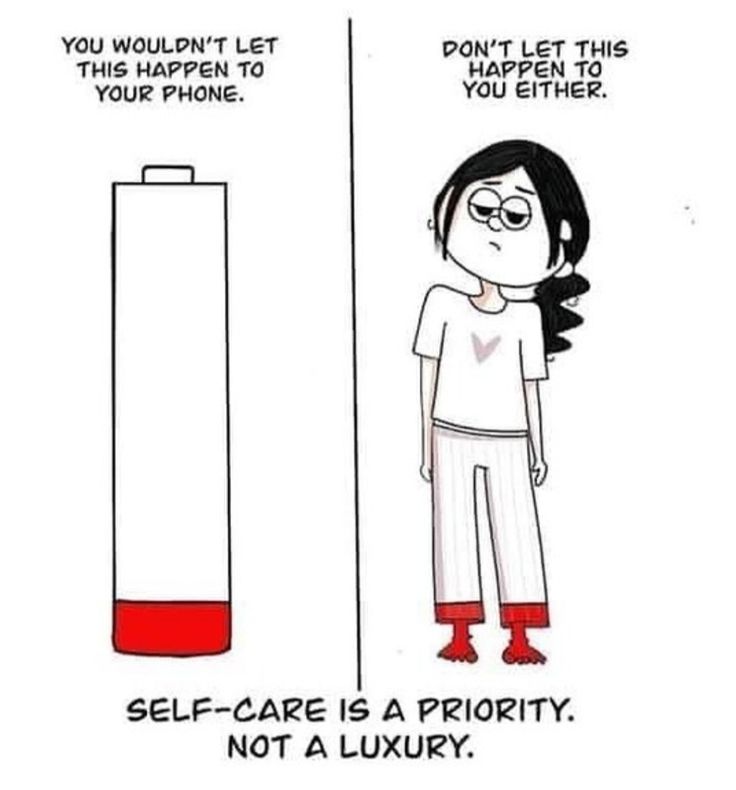
After I did the scary boundary-setting and lived to tell the tale, I did it again the same week in another situation. And it gets easier. I still feel a bit awkward at the moment I speak up to set or defend a boundary, especially if I fear anger or being seen as not nice. But it feels so good to have the boundary set, that I am now willing to go through the awkward moments to get to the good part: changed behavior and clearer air. Certainly, some people have not been thrilled with my boundaries—plenty of people wanted me to stay being nice, and some were so upset with my newfound power that the relationship broke off. I had been so afraid of that reality, but the truth is that I don't want to be in relationships that require me not to have boundaries.
The cost of too-loose or nonexistent boundaries
We may be paying a price for the boundaries we fail to set. According to Boundaries authors Cloud and Townsend, if you have an interaction with someone that leaves you feeling sad, angry, depressed, critical, withdrawn, perfectionistic, and argumentative, it might indicate that a boundary has been crossed.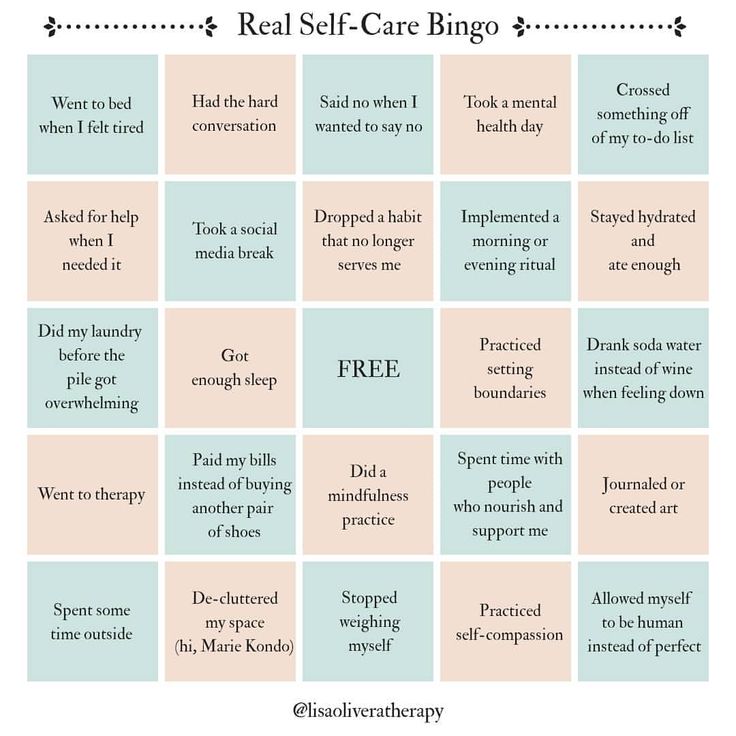 This not only hurts you, but it also hurts your relationships. When boundaries are crossed, either knowingly or unknowingly, resentment happens, and when enough resentment builds up over time, we can stop feeling love, safety, and all the other warm ooey-gooey good feelings that come with healthy relationships. These negative feelings can lead to a thick crust of resentment, which can lead to withdrawal, emotional disconnect, and relationship breakdown.
This not only hurts you, but it also hurts your relationships. When boundaries are crossed, either knowingly or unknowingly, resentment happens, and when enough resentment builds up over time, we can stop feeling love, safety, and all the other warm ooey-gooey good feelings that come with healthy relationships. These negative feelings can lead to a thick crust of resentment, which can lead to withdrawal, emotional disconnect, and relationship breakdown.
When people aren't directly addressing boundary violations, it is common to get angry about something much less significant. Fights that seem to be about something trivial—"I can't believe you forgot to buy the milk!" —are merely stand-ins for bigger issues, such as, "I can't count on you to do what you say and say what you mean, and all this distrust is really pissing me off, but I can't say that, so instead I am mad at your forgetting the milk and also at the weird noises you make when you eat…" when the real issue was that I am hurt that you disregard my feelings and ignore my requests for intimacy.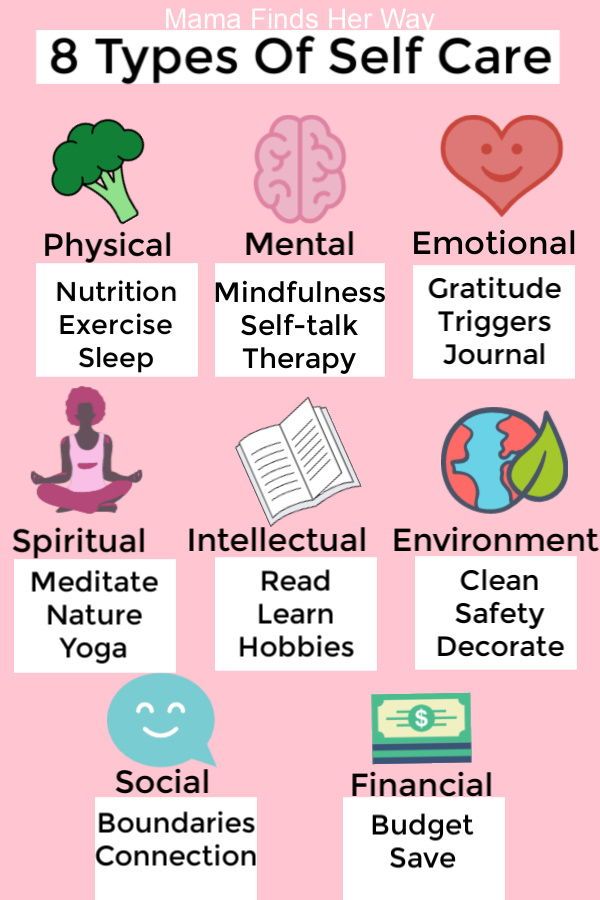
Crystal Andrus, author of The Emotional Edge, says, "When you feel yourself becoming angry, resentful or exhausted, pay attention to where you haven't set a healthy boundary."
How to make a self-care checklist
Taking care of yourself is just as important as completing a work task or doing household chores. Therefore, it is worth approaching this in the same way - with a clear plan and a list of specific actions
Why do we need a checklist
Checklists or checklists are used in many areas - from psychology to aviation. They help to structure information, reduce the number of errors due to disorganization and find insights. This is due to the fact that checklists provide an opportunity to look at the whole process from the outside. In his book The Checklist Manifesto, Dr. Atul Gawande notes, “Good checklists are precise and specific. Because of this, they are effective and applicable even in the most difficult situations. In addition, they are able to remind you of important aspects of the case. Checklists can play a similar role in self-care. By structuring different needs, they improve everyday life. nine0003
Checklists can play a similar role in self-care. By structuring different needs, they improve everyday life. nine0003
It is especially important to have such a checklist at hand in situations of acute stress, when anxiety and confusion make it difficult to keep even the simplest tasks in mind. A ready list of actions that you can take to support yourself will help you get out of the stupor. Learn how to create a self-care plan.
Assess Your Physical Needs
Physical needs are what help keep your body functioning properly. To assess your condition, go through the following points. nine0003
Sleep
Most adults need 7-9 hours of sleep each night. Its absence can affect mood, concentration and health. To sleep better, just follow a few simple recommendations.
Health
Regular visits to the doctor (annual medical examination) will help you identify health problems early, before they become serious. Many illnesses start small but can quickly worsen and affect well-being, energy levels, sleep, and appetite.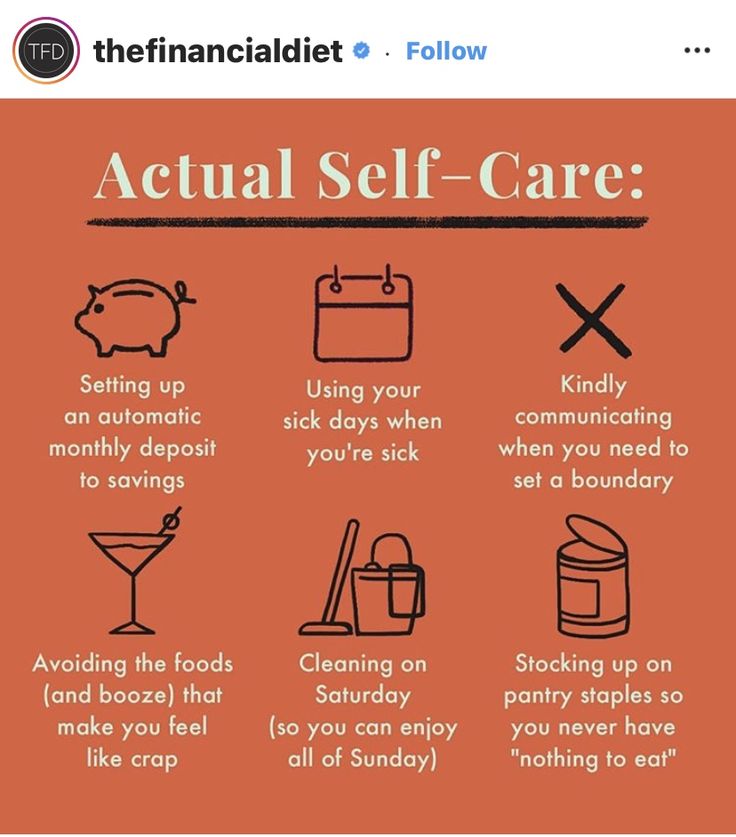 nine0003
nine0003
Nutrition
Proper nutrition includes more than just food selection. In addition to a balanced diet, you should pay attention to how you eat: in a hurry between meetings, in front of the TV, or calmly, with the opportunity to eat slowly and enjoy the process.
Smart Intuitive Eating (eating in moderation when you feel like it) is an approach that helps you feel more satisfied with food. It allows you to enjoy any food and does not set a stressful framework. nine0003
Sports
Adults should get at least two and a half hours of physical activity a week. Exercise can feel like an unpleasant chore if you don't enjoy what you're doing. Therefore, it is extremely important to choose activities that you enjoy (or at least do not cause any particular inconvenience). If you hate running, try swimming or cycling.
Physical intimacy
People often use the word "intimacy" to refer to sex. However, other types of physical contact also play an important role in feeling good. Touch is a basic human need, so if you don't have a sexual partner, it's worth finding other ways to fill it. You can try:
Touch is a basic human need, so if you don't have a sexual partner, it's worth finding other ways to fill it. You can try:
- go for a massage;
- go to dance classes;
- hug friends and relatives more often;
- get a pet.
Assess your mental needs
Mental needs are related to cognitive and mental health. It is worth paying attention to the following points.
Stress reduction and therapy
Stress plays an important role in mental health. Examine what has been causing you stress lately. Find new ways to deal with it yourself or get a professional to help you with it. nine0003
Personal boundaries
Strong boundaries help you manage your time better—and make time for self-care. To set personal boundaries, it's worth learning to:
- say "no" when you don't want to do something;
- do not take on extra work;
- directly communicate your needs to other people.
Cognitive abilities
Developing your mind can bring many benefits to your overall well-being.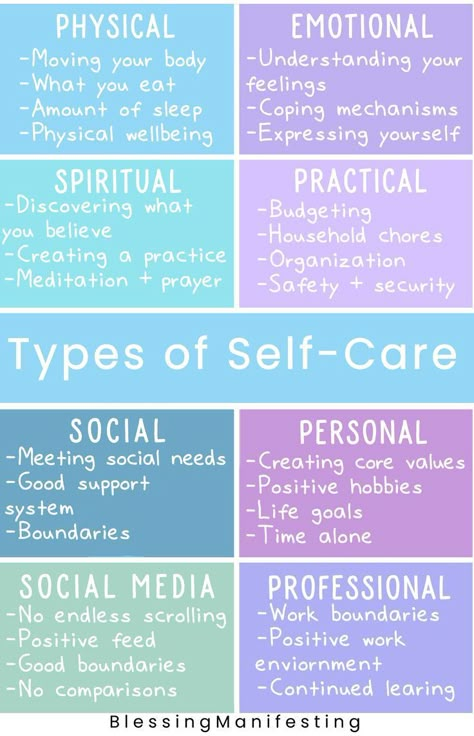 Boosting cognitive skills may include:
Boosting cognitive skills may include:
- learning a new hobby;
- reading;
- intellectual games;
- quests;
- walks in new places;
- trips to museums.
Personal growth
Taking the time to develop yourself as a person is another way to take care of yourself. It can lead to a more meaningful life, increase your self-esteem and improve your relationships with others. To broaden your outlook, ask yourself a few questions. nine0003
- What can I learn about different cultures?
- How can I spend time with people I don't usually associate with?
- How can I improve my education?
- If this job does not satisfy me, what are my options for moving forward?
The need for breaks
Allowing yourself to be distracted and relaxed from time to time, you give the brain the opportunity to recharge, and this contributes to its optimal work. If your attention is often scattered, this may indicate that you are not getting enough rest.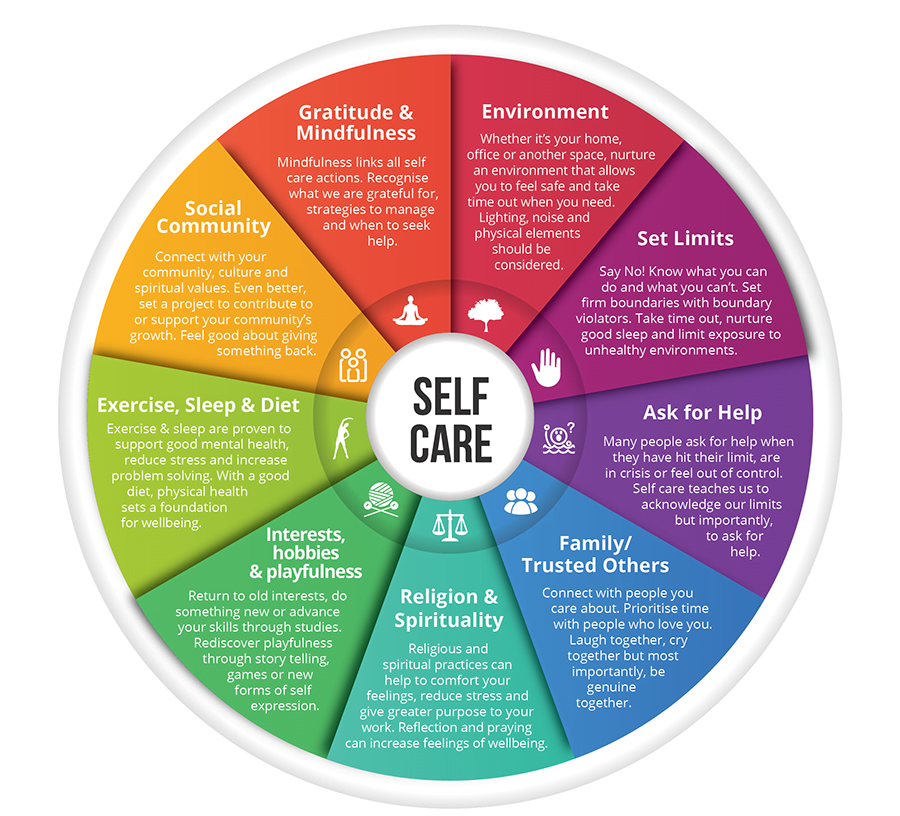 A schedule full of burning deadlines and things you don't feel like doing can lead to burnout over time. To prevent this from happening, make time for your favorite way to relax. The main thing is that it does not harm health. nine0003
A schedule full of burning deadlines and things you don't feel like doing can lead to burnout over time. To prevent this from happening, make time for your favorite way to relax. The main thing is that it does not harm health. nine0003
Friendships and personal time
On the one hand, we all need to share our thoughts and experiences with others sometimes. Such an empathic exchange of emotions helps to cope with life's difficulties and reduce the amount of stress. However, do not forget that time alone with yourself is also extremely important.
Put it all together
So, you've gone through all the points and assessed your current state. Now make a list of things you can do to improve it. The main thing is not to grab everything at once. Start with areas that are completely sagging. For example, if you find yourself moving very little and experiencing a lot of stress due to constant overwork, you can work on physical activity, personal boundaries, and self-soothing skills. Don't try to pick up a new hobby and cook every day at the same time. nine0003
Don't try to pick up a new hobby and cook every day at the same time. nine0003
In general, start with your needs. Remember that they can change regularly: the checklist from 2020 will be very different from the one created in 2022. View your self-care plan as a living document that evolves with you. Regularly reevaluating it will help identify less effective strategies and add new useful approaches.
Check your completed checklist for realism
Your checklist won't do much good if you don't put it into practice. Therefore, it is important to assess how ready you are to carry out all the planned actions and whether you have enough resources and motivation for this. To do this, answer a few more questions. nine0003
Am I trying to do too much?
Taking care of yourself can burn you out. Too many obligations, even pleasant ones, tend to increase stress, as a person does not have time to listen to his condition and reflect.
Are finances included?
You signed up for an expensive gym to get more exercise. But you may end up feeling more stress about spending than getting energy from activity. So the first thing to do is to make sure that spending doesn't add to your stress. nine0003
But you may end up feeling more stress about spending than getting energy from activity. So the first thing to do is to make sure that spending doesn't add to your stress. nine0003
Will there be time?
You need to take care of yourself all the time, and not just during times of greatest tension. Regular satisfaction of mental needs allows you to radically reduce the level of stress in everyday life. Try to set rational self-care goals that you can achieve along with work and other responsibilities.
What helped you in the past?
Recall a time when you felt relatively happy and had a positive attitude towards life. Ask yourself the question: what contributed to this mood? Perhaps it was a lack of responsibilities or a feeling of lightness. Jeremy Dew, psychologist and clinical director of the psychology organization The Oakwood Collaborative, emphasizes: “Self-care is most beneficial when it is based on your own history. Concrete memories can help recreate a sense of calm.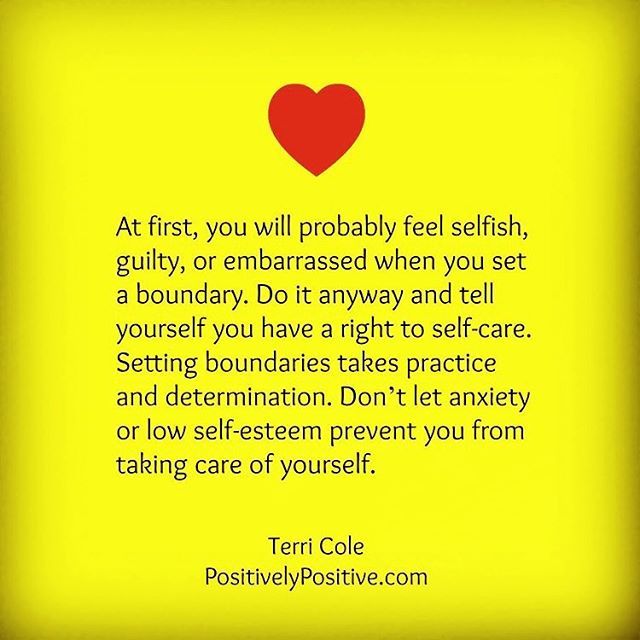 ” nine0003
” nine0003
Do I see myself using this approach?
For example, you read about the mental health benefits of gardening, so you want to start gardening, but you don't particularly enjoy digging in the ground. You don't have to force yourself to do something you don't like. Remember that there are many alternatives. Continuing the example with the garden, it is not necessary to arrange beds on the balcony - you can get a houseplant that does not require complex care and pleases the eye. Or master the art of arranging bouquets. nine0003
All-time checklist for stress relief
- 🤷 Shoulders. What position are they in? Try to relax and lower them.
- ✋ Hands. Unclench.
- 👅 Loin, tongue and jaw. Relax.
- 🫁 Breath. Take a deep breath.
- 🧠 Thoughts. Think pleasant.
About personal boundaries and unsolicited care
The topic of personal boundaries has been interesting to me for some time, especially considering that in Soviet times this was not taught, for obvious reasons.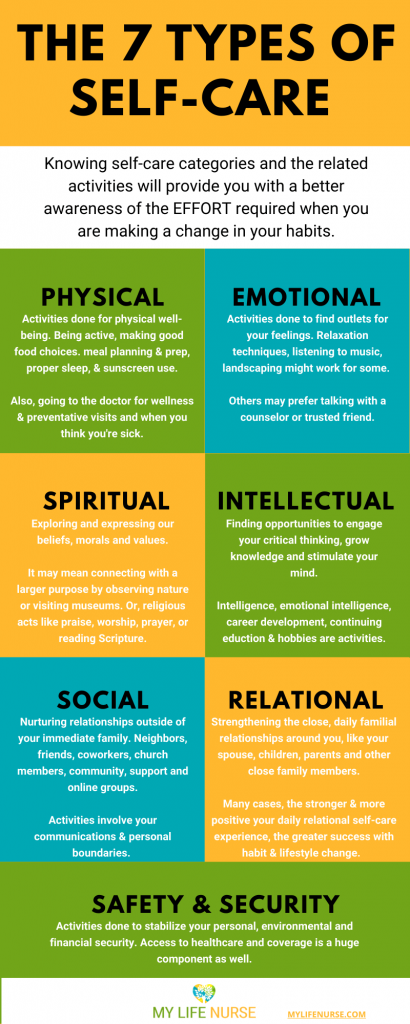 And in Ukraine, not many people understand what it is yet. nine0003
And in Ukraine, not many people understand what it is yet. nine0003
In general, personal boundaries are a delicate thing. It is very important not to confuse yours with others. For example, if someone tells you about you, then these are your boundaries, although that person may think, since HE speaks, then he has the right and these are his boundaries.
I recently read a good article about covert aggression. The article mentioned unsolicited care as one of the manifestations of covert aggression. And it's very interesting. Because especially in our culture, obsessive, suffocating care is considered a sign of great love, and you should accept it, even if it only makes you feel worse. So it's not necessary. nine0003
I'll tell you with an example.
(I will now talk about adults, but I think that this also applies to children from a certain age, if we want them to grow up psychologically mature).
You see that your loved one is lightly dressed, the room is cool, and it seems to you that he is cold. At the same time, the person himself behaves calmly, does not hug himself with his arms, trying to warm himself, does not jump on the spot, and so on. It's just that you decided so after comparing all the factors. You go and silently cover him or bring him warm clothes. nine0003
At the same time, the person himself behaves calmly, does not hug himself with his arms, trying to warm himself, does not jump on the spot, and so on. It's just that you decided so after comparing all the factors. You go and silently cover him or bring him warm clothes. nine0003
Like in a joke:
– Sema, go home!
- Am I cold?
– No, you want to eat.
You do not understand why your loved one suddenly reacts sharply to your care, and sometimes you even try to convince him that he really needs it.
What's going on?
1. You didn't ask if you needed help or if you understood the situation correctly. So, they invaded other people's borders.
2. You do not trust an adult that he himself is able to understand when he is cold or hungry. Only you can decide this for him. This is guardianship and parental attitude, you put a person in the role of a child. nine0003
There are other situations.
You think that someone is cold, and you ask:
– Are you cold? Bring you something?
They answer you:
- Yes, I'm a little cold, but I really don't want to get up for a blanket.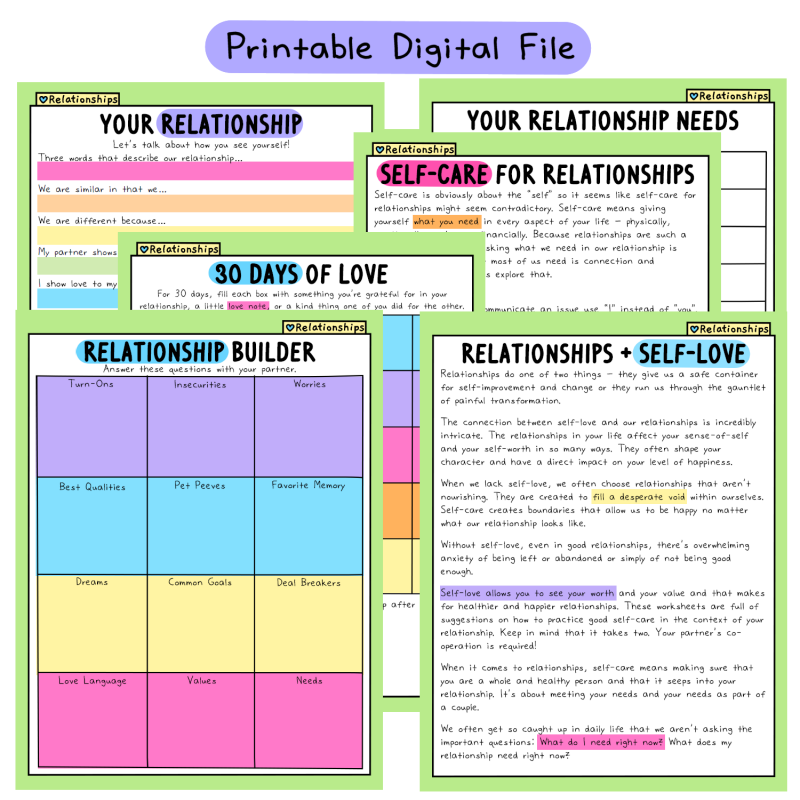 If it's not difficult for you, bring it, please.
If it's not difficult for you, bring it, please.
You bring, and everyone is happy. And your need for care is realized, and the person will be warmed when it was needed.
If they say “no need, thank you, I'm not cold”, this should just be accepted and respected.
The third situation. nine0163 A person is sick and you take care of him. This usually means that you automatically move from the role of Adult to the role of Parent, and the second person to the role of Child. He relaxes and gives all decisions to you.
You say:
- Since you are not feeling well, I will come and pick you up, take you home, put you to bed and make tea or whatever you want.
You can ask, and sometimes you don't even have to ask. From my experience, when a man takes such care of a woman, she feels very loved and protected (precisely in a weakened state - fatigue, illness). nine0163 This is the case when care is needed and important. The main thing is that the other side also knows how to accept 😉
So, unsolicited care is aggression, because you violate the boundaries of another person, even if it seems to you that this is from great love.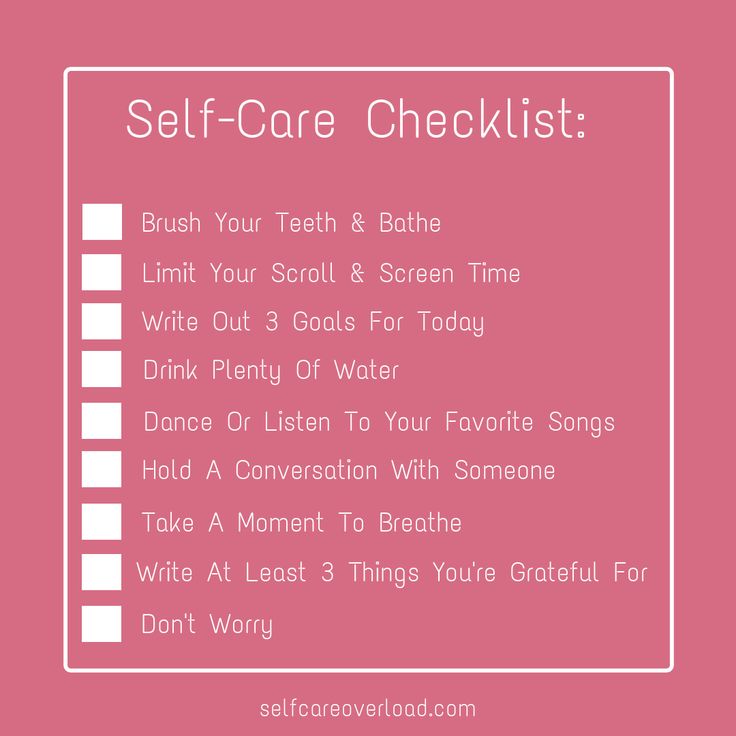 Moreover, it is difficult for the second person to refuse such care, because "the person with good intentions wanted to." It turns out a disservice.
Moreover, it is difficult for the second person to refuse such care, because "the person with good intentions wanted to." It turns out a disservice.
It is possible and necessary to refuse unsolicited care, preferably calmly, but firmly. This is the upholding of your boundaries. If someone gets offended when you set your limits, it usually means that, firstly, the person could have been sitting on your head for some time, and then he was asked to move. Secondly, he himself has questions with his own boundaries. And of course, resentment is usually manipulation and falling out of the role of an Adult. nine0003
By the way, children just have the “I myself” stage. And I see how great it works in practice to transfer decision making to a child, so that from childhood he listens to his body, his desires and knows how to be guided by them - what to wear, what to eat, albeit on a small scale, but so that it makes him listen to himself.
In the same way, I see a lot of conventionally adult people who are not able to understand what they want and are led by their partners (in our culture it is very common for women to patronize their husbands with condescension, and they dutifully do everything they are told, looks depressing, as for me).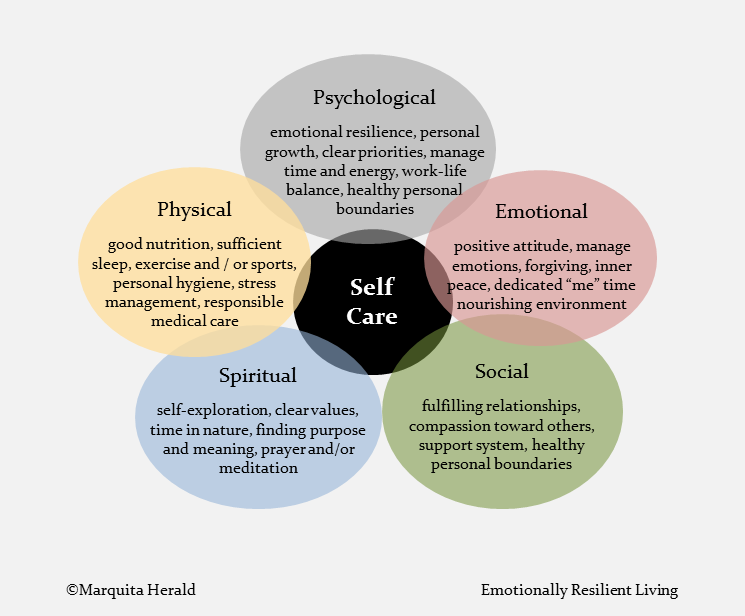 nine0003
nine0003
Practice shows that when a person begins to consciously track his own boundaries, say “no” and so on, he rarely crosses those of others.
But in general, the boundaries are exactly where they were placed. And if you didn’t voice them, didn’t expose them, then they will end up in the place where the other person with whom you interact will put them for you. Therefore, saving the borders, of course, is only our business, and there is no point in being offended by obsessive people. You need to learn to say “no” and stop talking / communication when you become uncomfortable, without fear of offending anyone. And politely look for the line between yourself and others, showing love for yourself, first of all. nine0003
By phone:
– How are you feeling?
- Very sore throat, difficult to talk, temperature 38.
She continues talking anyway.
– Wow, what a high temperature! What do you think to yourself? - Sounds like a complaint.
- I do whatever needs to be done.